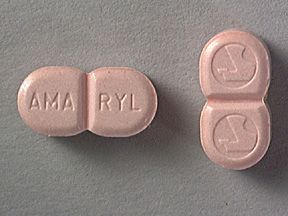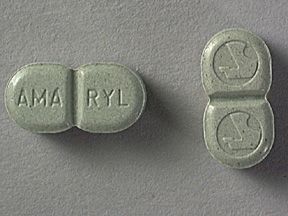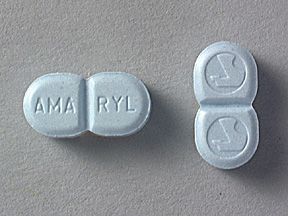Amaryl (glimepiride) is a brand-name drug that’s prescribed for type 2 diabetes. Amaryl comes as an oral tablet that’s typically taken once per day. The dosage can vary depending on several factors.
Amaryl belongs to a drug class called sulfonylureas. Amaryl is available in a generic version called glimepiride.
Keep reading for specific information about the dosage of Amaryl, including its strengths and how to take the medication. For a comprehensive look at Amaryl, see this article.
Note: This article describes the typical dosage and administration for Amaryl provided by the drug’s manufacturer. When taking Amaryl, always follow the dosage prescribed by your doctor.
Below is information about Amaryl dosages, including the drug’s form, strengths, and typical dosages. You should always take the dosage of Amaryl that your doctor recommends.
Amaryl form
Amaryl comes as an oral tablet.
Amaryl strengths
Amaryl tablets come in three strengths:
- 1 milligram (mg)
- 2 mg
- 4 mg
Typical dosages
Typically, your doctor will start your treatment with a low dosage. Then they’ll adjust it over time to reach the amount that’s right for you. Your doctor will ultimately prescribe the smallest dose for diabetes that provides the desired effect.
The following information describes dosages that doctors commonly prescribe or recommend. However, be sure to take the dosage your doctor prescribes for you. Your doctor will determine the best dosage to fit your needs.
| Amaryl starting dosages | Recommended dosage increase | Maximum dosage |
| • 1 mg once per day, or • 2 mg once per day | 1 mg or 2 mg per day, every 1–2 weeks as recommended by your doctor | 8 mg once per day |
Long-term treatment
Amaryl is meant to be taken as a long-term treatment. If you and your doctor determine that Amaryl is safe and effective for you, you’ll likely take it long term.
The Amaryl dosage your doctor prescribes will depend on several factors. These include:
- the severity of the condition you’re taking Amaryl to treat
- other medical conditions you may have
- your age
- other medications you may take
Dosage adjustments
If you have kidney problems, your doctor may prescribe you a lower starting dosage. They may also adjust your Amaryl dosage throughout treatment.
If you’re an adult age 65 years or older, your doctor may begin your treatment with a lower Amaryl dosage. They may also be more careful about increasing your dose over time. This is because older adults may have an increased risk of developing hypoglycemia (low blood sugar) from Amaryl treatment.
Talk with your doctor or pharmacist if you have questions about changes in your Amaryl dosage.
Amaryl comes as an oral tablet. You should take Amaryl with breakfast or your first meal of the day.
The manufacturer of Amaryl has not stated if Amaryl tablets are safe to crush, split, or chew. If you have trouble swallowing tablets, see this article for tips on how to take this form of medication. You can also talk with your doctor or pharmacist.
Accessible drug labels and containersSome pharmacies offer labels with large print, braille, or a code you scan with a smartphone to convert text to speech. If your local pharmacy doesn’t have these options, your doctor or pharmacist might be able to recommend a pharmacy that does.
If you’re having trouble opening medication bottles, ask your pharmacist about putting Amaryl in an easy-open container. They also may recommend tools that can make it easier to open bottles.
If you miss a dose of Amaryl, try to take it as soon as you remember. But if it’s the next day, skip the missed dose. Take your next dose at the regular scheduled time. Do not take more than one Amaryl dose at once.
To help make sure that you don’t miss a dose, try using a medication reminder. This can include setting an alarm or putting a note where you’ll see it, such as on your bathroom mirror or bedside table. You could also download a reminder app on your phone.
If you take more Amaryl than your doctor prescribes, you may develop serious side effects.
It’s important that you do not take more Amaryl than your doctor advises.
Symptoms of an overdose
Overdose symptoms of Amaryl can cause hypoglycemia (low blood sugar), which can cause symptoms such as:
- dizziness
- anxiety
- shakiness
- sweatiness or clammy skin
In serious but rare cases, Amaryl can cause severe low blood sugar. This may lead to symptoms such as seizures, coma, or loss of consciousness.
If you take more than the recommended amount of Amaryl
Call your doctor right away if you believe you’ve taken too much Amaryl. Another option is to call America’s Poison Centers at 800-222-1222 or use its online tool. If you have severe symptoms, immediately call 911 or your local emergency number, or go to the nearest emergency room.
The dosages in this article are typical dosages provided by the drug manufacturer. If your doctor recommends Amaryl for you, they will prescribe the dosage that’s right for you. Always follow the dosage that your doctor prescribes for you.
As with any drug, never change your dosage of Amaryl without your doctor’s recommendation. If you have questions about the dosage of Amaryl that’s right for you, talk with your doctor.
Besides learning about dosage, you may want other information about Amaryl. These additional articles might be helpful to you:
- More about Amaryl. For information about other aspects of Amaryl, refer to this article.
- Side effects. To learn about side effects of Amaryl, see this article. You can also look at the Amaryl prescribing information.
- Cost. If you’d like to learn about glimepiride and cost, see this article.
- Details about diabetes. For details about your condition, see our diabetes hub and this list of related articles.
Disclaimer: Medical News Today has made every effort to make certain that all information is factually correct, comprehensive, and up to date. However, this article should not be used as a substitute for the knowledge and expertise of a licensed healthcare professional. You should always consult your doctor or another healthcare professional before taking any medication. The drug information contained herein is subject to change and is not intended to cover all possible uses, directions, precautions, warnings, drug interactions, allergic reactions, or adverse effects. The absence of warnings or other information for a given drug does not indicate that the drug or drug combination is safe, effective, or appropriate for all patients or all specific uses.



